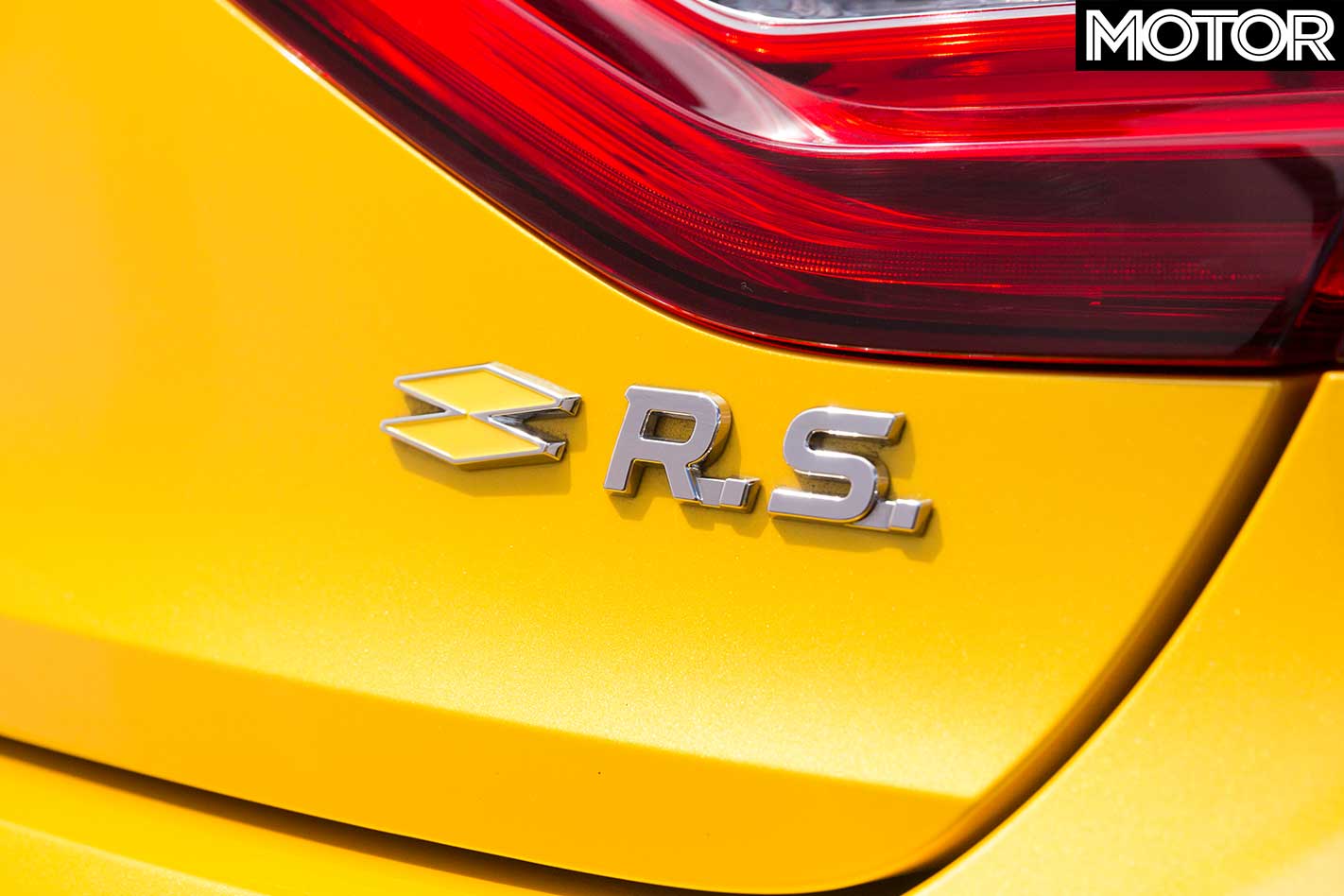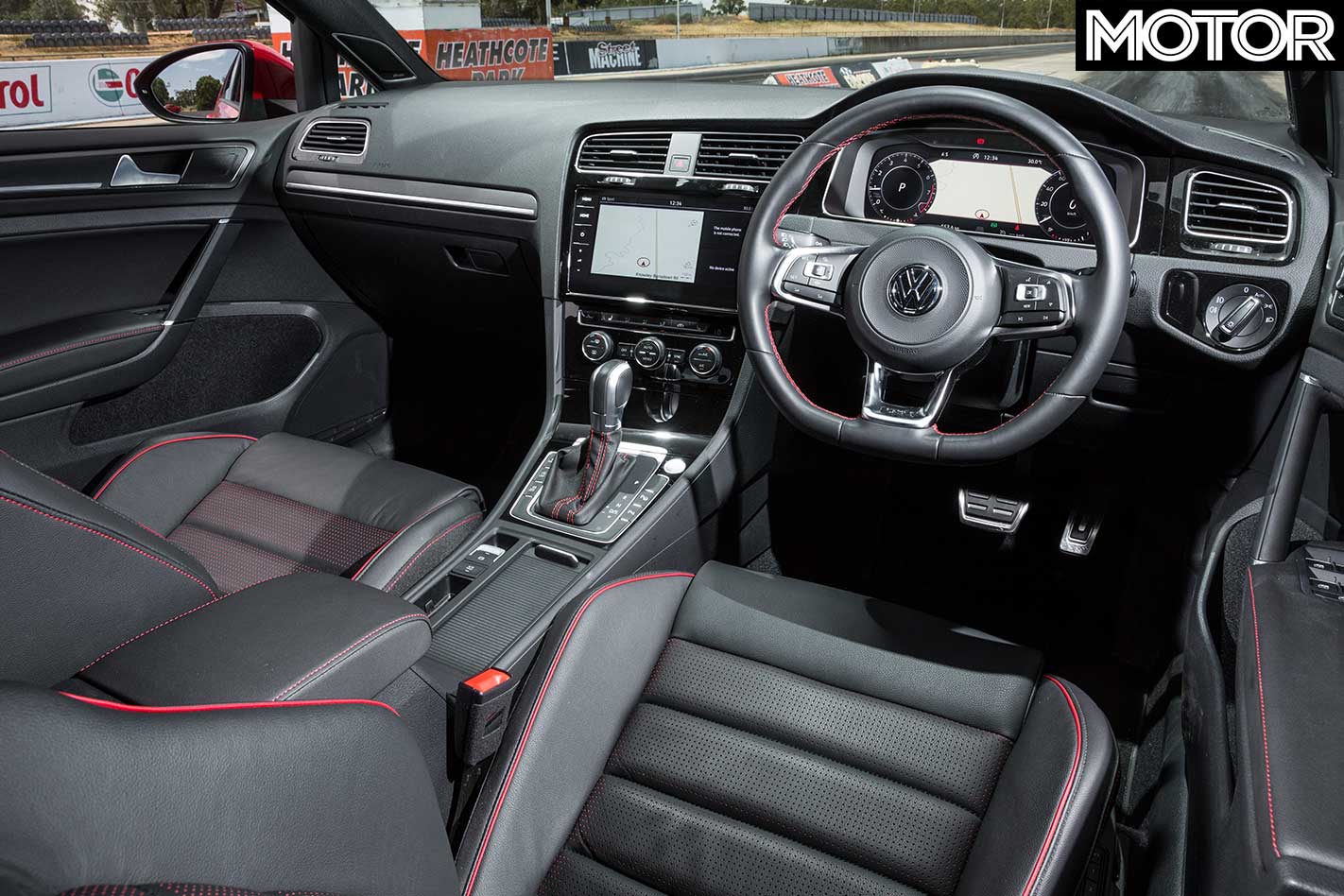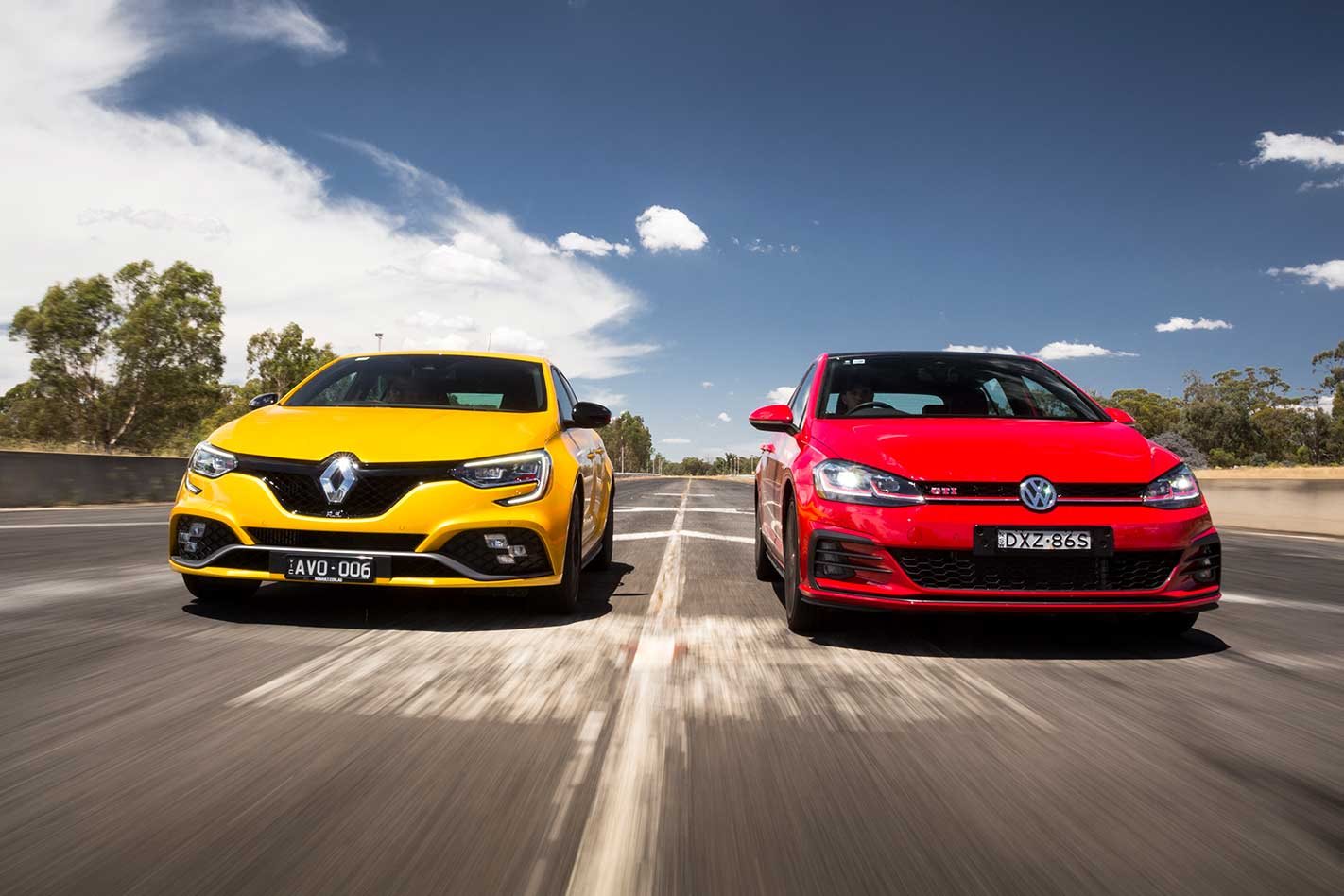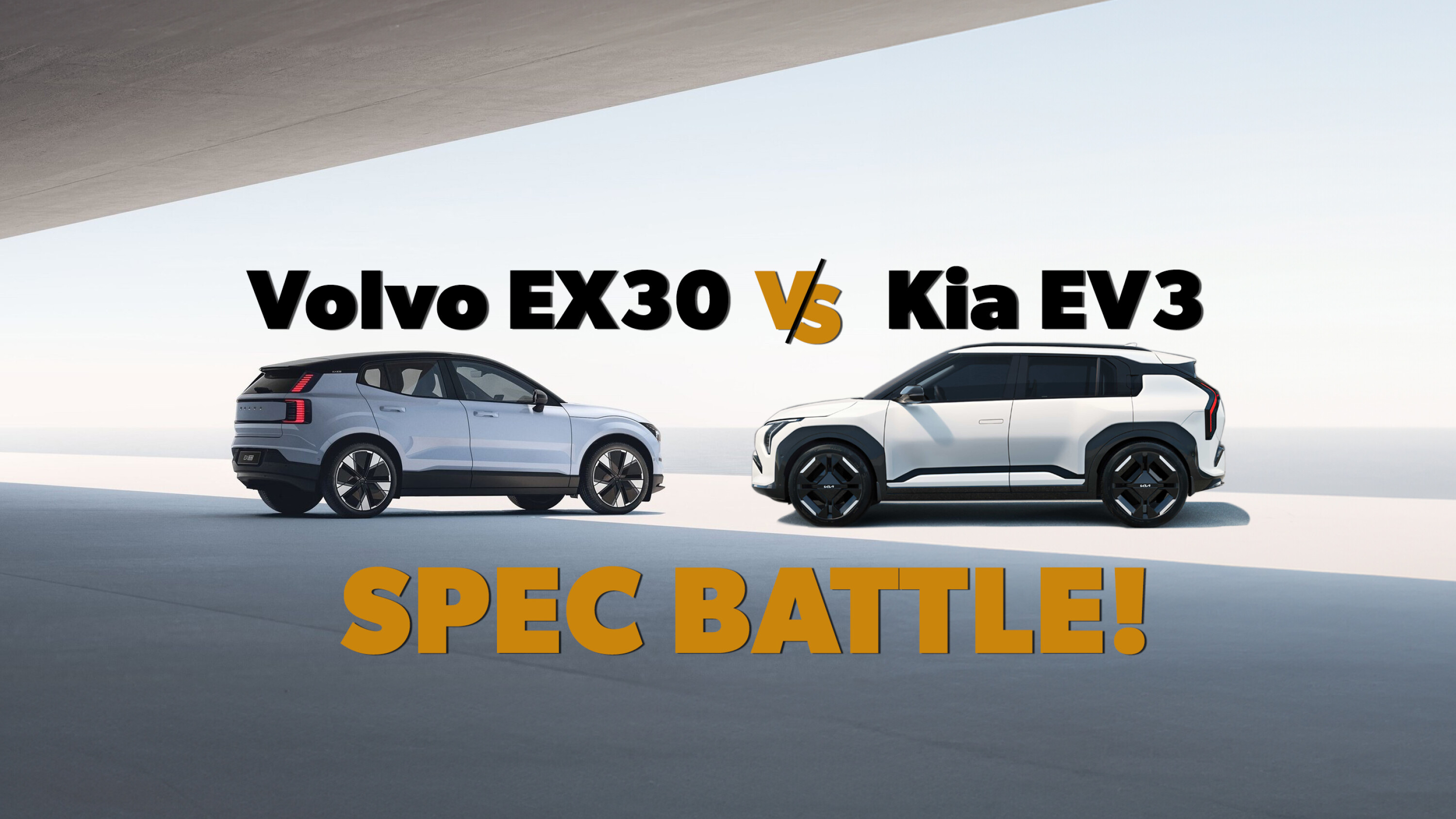When Renault revealed its new 2019 Megane RS with five doors and an automatic transmission, we wondered if they were hiding the three-door manual one behind a curtain. But they were not – instead, they had taken the Megane RS in a more sensible direction. And sensible is not what we are used to thinking of Renault Sport.
These folks, remember, replaced the rear seats in a Clio with a V6. The result was delightful, but the handling endangered anyone other than Sebastien Loeb. Sometime later, it built a Megane RS with plastic windows, a carbon-fibre bonnet and a roll cage to claim a front-wheel drive lap record at the Nürburgring Nordschleife.

This madness continued until the second-generation Megane RS. It was a stiff-riding, manual-only hatch that didn’t compromise fun. We loved it. But then the capable Mk IV Clio RS arrived in 2014 with five doors and EDC only, Renault-speak for Efficient Dual Clutch. It lost character, but gained sales. Many feared it was a sign of things to come. They were right.
This new Megane RS introduces five doors, an automated ’box, a smaller 1.8-litre turbocharged engine, and more choice. You can pick between two chassis options and soon will be able to pick two engine outputs. It’s the same case for the transmission, but since we’ve already spent a lot of time with the manual, we’re keen to see what its EDC is all about.
Volkswagen’s range of performance Golfs once spoiled us for choice as well, but its front-wheel drive offerings have dwindled. It flicked the GTI Original and GTI Perfomance and now gambles on a single MY19 GTI variant, boosted in value and performance, to strengthen defences against circling foes.

Its 2.0-litre turbocharged four bumps outputs to 180kW/370Nm, up 11kW/20Nm, and employs a Haldex-based, electronically locking front differential. The brake discs grow in size, too, from 312mm/272mm front and rear to 340mm/310mm. Essentially, it’s the powertrain and brake package from the three-door limited GTI Edition 1.
As a result, the five-door only GTI now starts at $46,190 with a seven-speed wet dual-clutch. That’s $2200 more than the 2017 version. It justifies this with a digital instrument cluster and active safety gizmos. But with the Sound & Style pack that swaps 18s for 19s and adds premium audio, along with the $3900 Luxury Pack’s heated leather seats and a sunroof, our press car charges $52,390.
At $47,490, the ‘automatic’ RS is three grand more expensive than the base car that comes with a six-speed manual transmission, and ours is loaded with the complete options list. With metallic paint ($880), premium audio ($500) and Alcantara seat trim ($1190), it nudges the price to $50,060. So it’s ringing the Golf’s doorbell for a fight.

As always, there are two chassis tunes, but Renault has banned the stiffer Cup Chassis from being optioned on the base ‘auto’ RS, denying it a mechanical front LSD and dual-material front brake discs. They’ll instead come on the RS300 EDC Trophy that arrives later this year.
It’s still packing RS-specific goodies like hydraulic bump stops and rear steering. They’re a first in the hot hatch segment and work with ultra-wide 19 inch tyres to, hopefully, deliver handling nirvana. Brembo brakes also feature at each corner.
The only thing unique to this EDC variant, compared to the manual, is its six-speed Getrag dual-clutch transmission. Obvious, yes, but it gets a new set of gear ratios and adds a launch control function. As a result, it’s also claimed to hit 100km/h from rest in 5.8 seconds even though it’s 23kg heavier. That’s Honda Civic Type R fast.

Engineers focused on the 1.8-litre engine’s mid-range response, aiding its twin-scroll turbocharger with a specialised intake system and cylinder head. That means it’s good for 390Nm from 2400rpm to 4800rpm, and power peaks at 6000rpm with 205kW. The result is a less frenetic delivery compared to the old F4RT engine. But traction’s still an issue.
Pointed down Heathcote on a very hot day it yields a 6.6sec run to 100km/h from rest out of the box. Even with wide 245mm Bridgestones the open-diff front axle breaks into wheelspin. It’s unavoidable in first gear, launch control or not, and lingers for a moment in second gear.

We find a grippier patch to launch the car. Put the powertrain into Race, load the brake, spike the revs to 3000rpm and wait for the Christmas Tree lights to disappear on the dash. When they go out it eases, rather than drops the clutch, in first gear. It bites and soon we’re into second, then third, as the exhaust squeezes out an enticing crack on each upshift. Eventually, the Driftbox shows 0-100km/h is done in 6.4sec and 400m in 14.52sec at 162.66km/h.
That’s slower than what we extracted from the new manual RS Cup by four and five tenths respectively, which could be down to a few things. We couldn’t figure out how to adjust the launch rpm, you can’t build up boost against an electronic handbrake and the automatic powertrain shifts at 6875rpm, or earlier, whereas the manual can run to 7000rpm. It’s hot, too, and the car’s sensitive turbo engines are feeling it.

Our curiosity narrows on the GTI and its fancy differential.Could it mask a 25kW and 20Nm disadvantage? VW fiddled with the GTI’s engine software to broaden its power band while moving it up the range so peak power spreads almost all the way until redline. It’s a brawny unit that pulls hard from down low and delivers its turbo surge in a linear fashion.
We should be celebrating that ESP now goes all the way off, but with no added grip, it doesn’t matter how clever this Haldex unit on the front axle is, those 225mm Pirelli P-Zeros are no match for its torque. Even playing around with the launch control rpm proves useless, as once that turbocharger starts whistling in first gear all bets are off on finding purchase.
Keeping the throttle buried with ESP in its half-way mode is the best solution. This way the engine stays on boost while the traction control manages grip through first gear. It runs the Renault very close, hitting 100km/h from rest only 0.09sec later, in 6.51sec, and closing that gap to 0.06sec by the 400m mark where it registers a 14.58sec pass at 161.66km/h.

Although it’s producing less power and finding less traction, its 273Nm-per-tonne trumps the Megane’s 268Nm. It spreads the grunt over a bigger area, accelerating strongly all the way to its redline. Still, it falls behind on a roll as 80-120km/h in 3.72sec trails the Megane’s 3.57sec.
You won’t save either car’s engine note as your ringtone, but the Renault at least injects some excitement into its noise. Its exhaust is rorty and an artificial note played through the speakers adds more depth to the growl. The Golf, meanwhile, sounds muffled, like it’s roaring into a pillow.
Inside is a better place to hear the Golf’s throaty sound, and you can change it in the Individual drive mode. You can switch between Normal and Sport, changing when the sound generator kicks in as opposed to its actual volume. The Renault, by comparison, is your own recording studio.

‘Perso’ mode lets you toggle multiple instruments between Normal, Sport and Race. The powertrain mapping amps up its shift noise, the exhaust system takes care of the pipes and the artificially generated noise adds more than you think. So, really, you can tailor the noise and volume to your own taste.
You can also tailor everything from throttle response to its rear-wheel steering setup. In Sport, or any mode below it, the rear wheels point in the opposite direction up to 60km/h, above that speed they’ll point in the same direction. Race mode lifts the switchover to 100km/h.
Apexes are an endangered species when the Renault approaches and the rear axle makes its steering super sharp. Gone is the Megane’s granular steering feel, replaced with something slightly elastic and light in assistance.

Meanwhile, in the Golf, you can play around with the steering weight. It’s a fast rack on paper, going from one lock stop to another in 2.1 turns, though as much as we like its weighting, it’s outclassed by the Renault. You can sense there’s slight delay in turn-in, or the front-end doesn’t respond as quick as the steering.
The same story plays out in handling. The Renault barrells into bends with so much grip and composure you always feel like it could have committed with another 10km/h. It’s almost intimidating to think of approaching its limits on a road. Its dual-axis front suspension helps it dig in under power surprisingly well, too, even with no limited-slip differential.
Try to keep up in the Golf and you might barrel into the bushes. Its relatively soft suspension setup leans on its outer contact patches and it doesn’t like being provoked. Adding sudden lock wags the rear-end and wakes the stability control. There’s an upside to this, though.

It sails over pimpled surfaces at any speed and only snags on gaping potholes. But it doesn’t crash into them, and eats up stretches of road better than some touring sedans. Obviously the suspension’s hard bits, like springs, dampers and bushings, are setup to suit the car in its softest damper setting.
Conversely, suspension is the only thing you can’t adjust in the Renault. It’s fixed and the result feels like being punched through a thin mattress. Hydraulic bump-stops put a second piston inside each damper that help slow big compressions and they work, to a degree, to isolate big hits at high speed.
Not to damn it with faint praise, but the RS is fine to live with. It’s clearly not built as well as the Golf inside, but the layout and seating position are good. The same goes for tech and outward visibility. The dual-clutch saves it from dodgy pedal layouts and you’ll get used to the weirdly positioned volume stalk, if not the cruise control buttons. Gotta love French quirk…

What the transmission adds, though, are frustrating paddles. They’re metal and a delight to pluck, but if you’re going to mount them on the steering column, Renault, size them properly, like elephant’s ears. Not Spock’s from Star Trek. They are occasionally a bit awkward to use mid-corner.
There are no such complaints with the Golf. It’s a lesson on refinement, class and functionality. It’s the little things, like the dead pedal to the right of the accelerator, or the felt lining along the door bins, that show you where the money goes. And that new digital cluster also means it feels fresher than ever.
Of course, the MY19 Golf GTI runs this race down to a photo finish. It’s still incredibly accomplished and relevant, and in isolation it’s fantastic. But we liked it a lot more as a premium option in a range, not the only one. At $50K, it’s lost its champagne-on-a-beer-budget appeal. And its performance feels softened off when having a real crack.

When it comes down to it, we’re parking our butts in the Renault. The points it loses on liveability are clawed back on X-Factor. Its engine is smaller, but thanks to some clever turbocharging, it’s just as strong. It sounds better than the Golf, too, and its chassis is pure wizardry.
It’s a surprise, because we never thought we’d like it this much. You could easily drive it every day, provided you’re not crossing cattle grids daily, and the transmission not only suits the direction Renault has taken the Megane RS, but finds the aural character and involvement that’s missing in the manual version. It’s a crazy new world, where we prefer an ‘auto’ RS over a manual one, but as we’ve known all along, crazy is Renault Sport’s specialty.
Fast Facts

| u00a0 | Volkswagen Golf GTI | Renault Megane RS280 EDC |
| Body | 5-door, 5-seat hatch | |
| Drive | front-wheel | |
| Engine | 1984cc inline-4, DOHC, 16v, turbo | 1798cc inline-4, DOHC, 16v, turbo |
| Bore x Stroke | 82.5 x 92.8mm | 79.7 x 90.1mm |
| Compression | 9.6:1 | 9.9:1 |
| Power | 180kW @ 7000rpm | 205kW @ 6000rpm |
| Torque | 370Nm @ 4600rpm | 390Nm @ 2400-4800rpm |
| Power/Weight | 133kW/tonne | 120kW/tonne |
| Transmission | 7-speed dual clutch | 6-speed dual clutch |
| Weight (dry) | 1352kg | 1450kg |
| Suspension (f) | struts, adaptive dampers, anti-roll bar | struts, dampers, anti-roll bars |
| Suspension (r) | multi-links, adaptive dampers, anti-roll bar | torsion-beam, dampers, anti-roll bars |
| L/W/h | 4268/1799/1442mm | 4372/1874/1445mm |
| Wheelbase | 2626mm | 2669mm |
| Tracks | 1538/1516mm (f/r) | 1615/1596mm (f/r) |
| Steering | electrically assisted rack-and-pinion | electrically assisted rack-and-pinion; rear-wheel steering |
| Brakes (f) | 340mm ventilated discs, single-piston calipers | 355mm ventilated discs, 4-piston calipers |
| Brakes (r) | 310mm ventilated discs, single-piston calipers | 339mm ventilated discs, single-piston calipers |
| Wheels | 19.0 x 7.5-inch (f/r) | 19.0 x 9.0-inch (f/r) |
| Tyre Sizes | 225/35 R19 88Y XL (f/r) | 245/35 R19 93Y (f/r) |
| Tyres | Pirelli P Zero | Bridgestone Potenza S001 |
| Price | $52,390 | $50,060 |
| Pros | Interior polish; fit and finish; ergonomics; ride | Theatre; looks; grip; turn-in |
| Cons | Traction; grip; soft handling | Stiff ride; lofty limits |
| Rating | 4 out of 5 stars | 4 out of 5 stars |
The Strip

| u00a0 | Volkswagen Golf GTI | Renault Megane RS280 EDC | |
| 0-10km/h | 0.57sec | 0.61sec | |
| 0-20km/h | 1.13sec | 1.19sec | |
| 0-30km/h | 1.73sec | 1.77sec | |
| 0-40km/h | 2.28sec | 2.33sec | |
| 0-50km/h | 2.83sec | 2.86sec | |
| 0-60km/h | 3.49sec | 3.48sec | |
| 0-70km/h | 4.13sec | 4.09sec | |
| 0-80km/h | 4.83sec | 4.73sec | |
| 0-90km/h | 5.63sec | 5.55sec | |
| 0-100km/h | 6.51sec | 6.42sec | |
| 0-110km/h | 7.48sec | 7.3sec | |
| 0-120km/h | 8.54sec | 8.3sec | |
| 0-130km/h | 9.69sec | 9.6sec | |
| 0-140km/h | 11.03sec | 10.92sec | |
| 0-150km/h | 12.5sec | 12.32sec | |
| 0-160km/h | 14.34sec | 14.01sec | |
| 0-400m | 14.58sec @ 161.69km/h | 14.52sec @ 162.66km/h | |
| 80-120km/h (Drive) | 3.72sec | 3.57sec | |
| 100-0km/h | 41.04m | 37.21m | |
| Speed in Gears | |||
| 1st | 55km/h @ 6500rpm | 57km/h @ 6825rpm | |
| 2nd | 86km/h @ 6500rpm | 90km/h @ 6825rpm | |
| 3rd | 125km/h @ 6500rpm | 131km/h @ 6825rpm | |
| 4th | 169km/h @ 6500rpm | 180km/h @ 6825rpm | |
| 5th | 221km/h @ 6500rpm* | 234km/h @ 6825rpm* | |
| 6th | 250km/h @u00a06500rpm* | 255km/h @ 5395rpm* | |
| 7th | 250km/h @u00a06500rpm* | N/A | |
Heathcote Raceway, 28˚C, dry. Driver: Louis Cordony *Manufacturer’s claim Official timing supplier – VBOX Australia
In Detail
2019 Renault Megane RS280 EDC

01 – SEATS Megane’s standard cloth seat trim looks infinitely cheaper than VW’s ‘Clark’ upholstery, but their bolstering comfort is in another league
02 – GEAR SHIFTER Gear lever action and feel is worse in Megane, compared to VW, but the paddle action is much slicker and more tactile. We love the paddles’ metal touch.
03 – INSTRUMENTS Megane cluster can’t match VW’s for clarity or functions, but offers more customisation of rev and speed information through drive menu
2019 Volkswagen Golf GTI

01 – STEERING WHEEL Lovely leather wheel in VW uses a rounder rim than the Megane’s nappa leather wheel, which has more formed thumb locks
02 – TECHNOLOGY Huge 9.2-inch info screen trumps Megane’s 7.0-inch display for graphics and resolution, but is part of $2300 Sound & Style pack
03 – PEDALS Volkswagen footwell is more spacious, however, the Megane’s pedals feel sturdier underfoot and feature a fancy metal footrest
*This article originally stated the succeeded Golf GTI was equipped with a dry-clutch six-speed DSG transmission. This was incorrect. The article has been updated to reflect that.





